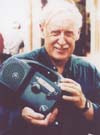 From my observations of recycling facilities around London, particularly in the Boroughs of Croydon, Greenwich, Lambeth and Southwark, I have observed a few things...
From my observations of recycling facilities around London, particularly in the Boroughs of Croydon, Greenwich, Lambeth and Southwark, I have observed a few things...Recycling facilities are just too far away for people to care in some of these places. In some cases, householders would have to walk an extremely long distance in order to recycle their items in which case they would just throw their recyclable items in the bin because this is the easiest option.
I have observed that there is confusion about which items can be recycled and which items cannot.
In order to make recycling work, the various Boroughs have to make recycling facilities more readily avalable for the consumers and explain more thoroughly which items they will take and which items they will not take (personally, I feel that everything that can be recycled should be).
To conclude, the most frustrating thing is when you have gathered all your recyclable materials into the bags or green plastic boxes allocated for recycling only to find the people who collect these do not pick them up, although some local councils are better than others when it comes to recycling.
Why is it that some Boroughs collect items which are mixed up and others want everything separated into neat little piles?
I think there needs to be some standardisation across the board to make life easier for everybody and to encourage recycling. Does it make sense to have 5 or 6 different bins for recycling?
Related Blog Links
Lambeth Country Show Saturday 18th July - Sunday 19th July 2009












